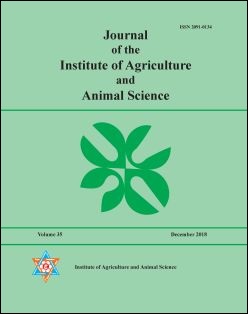Bionomics, Abundance and Management of Coffee White Stem Borer (Xylotrechus quadripes Chervolet) in Nepal
DOI:
https://doi.org/10.3126/jiaas.v36i1.48414Keywords:
emergence, genotype, screening, weatherAbstract
An experiment was conducted to study the life cycle, seasonal abundance and management practices of coffee white stem borer (Xylotrechus quadripes) at Horticulture Research Station, Kaski, Pokhara, Nepal from April, 2016 to October, 2019. The life cycle of coffee white stem borer was studied in laboratory by inoculation of first instar larvae into coffee branches up to adult emergence. The first instar larvae took 94±3 days to become adult. The monthly observation on the emergence of this borer showed that it was highly weather dependent and has two peak periods of emergence: April - June and September - November. Coffee white stem borer infestation was reduced to 11.11% with the application of treatments like scrubbing of stem and application of red soil mixed with fresh cow dung (1:1) or by stem scrubbing and application of Bordeaux paste on it followed by root zone application of Metarrhizium anisopliae (22.22%) or Beauveria bassiana (22.22%), or spraying of 10% lime (22.22%). Proper and timely management practices during cultivation and selection of borer resistant genotype seem beneficial for the coffee growers. Further, application of borer management practices based on abundance models are recommended to minimize the pest infestation.

